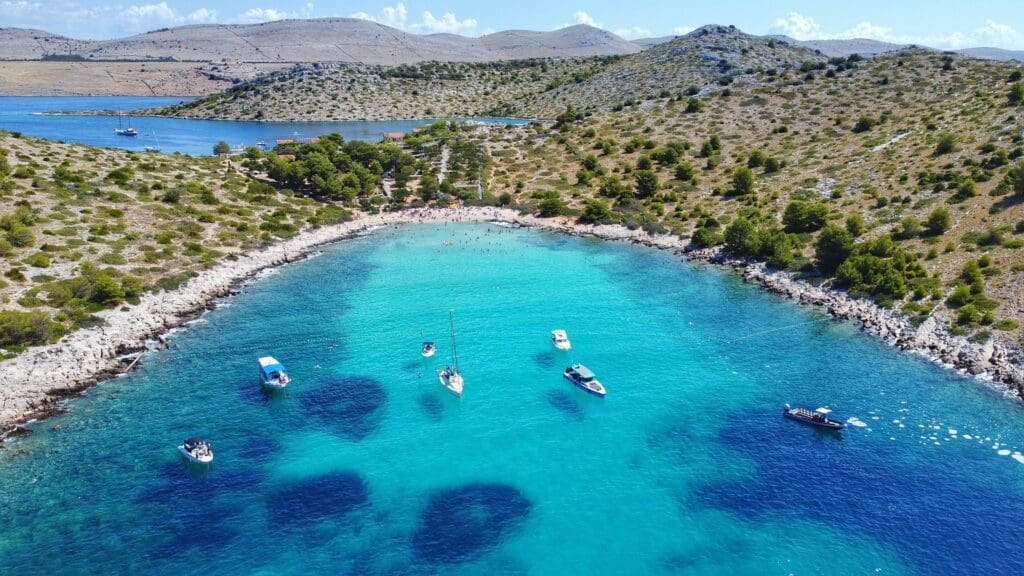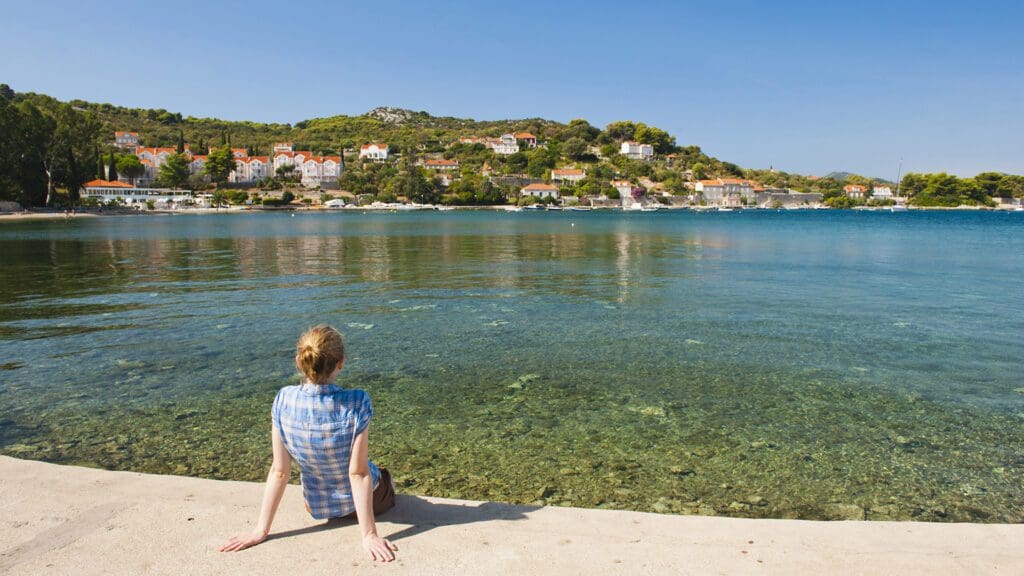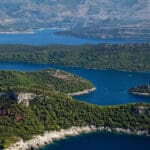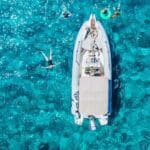Our Elaphiti Islands Boat Trip is consistently one of our most popular tours, and it’s easy to see why.
The Elaphiti Islands (also known as the Elafiti Islands or Elaphites Archipelago) are just west of Dubrovnik, so they’re easy to access on a day trip. Though there’s no shortage of things to do in picturesque Dubrovnik, a boat tour to the Elaphiti Islands offers something utterly different from time spent in the city.
From secluded paradisal beaches to wine tastings and the freshest seafood you’re ever likely to taste, this collection of islands offers a truly luxurious taste of life on the Adriatic.
Join us today as we explore things to do on the Elaphiti Islands and what makes them so magical.
And while you are here, have a browse of our Private Dubrovnik Boat Tours.

Elafiti, Elaphiti, or Elaphites? What’s in a Name…
Let’s begin by quickly exploring the name of islands, as you’ll no doubt come across variant spellings when researching your trip. In Croatian, the islands are spelled Elafitski otoci or Elafiti, while in English, you should use either Elaphiti Islands or the Elaphites.
Their name is derived from the ancient Greek word elaphos, meaning the deer. Some say the islands were referred to as the deer islands due to the deer which used to inhabit them. Others claim it is because they are shaped in the form of deer. Either way, it’s a fittingly wild name for such an area of outstanding natural beauty.
Sandy Beaches and the Blue Caves of Croatia
Koločep (or Kalamota, as locals call it) is the closest island to Dubrovnik and, along with Lopud and Šipan, one of only three inhabited islands in the Elaphites. These are the biggest of the 13 Elaphiti Islands and therefore offer their visitors a wealth of things to do and to see.
Koločep delivers to its visitors fine sandy beaches, restaurants offering world-class seafood, small cafes and bars on the boardwalk, and leisurely trails that criss-cross the island through its pine forests. Besides pristine nature, there are also several compelling buildings on the island, such as old churches, some of which date back to the 9th century.
Exploring the coves and sandy bays on the outer side of the island will delight keen swimmers. You can also enjoy your day moored on the boat in the shade of the pine trees (something that can certainly be arranged when your visit the Elaphiti Islands with Rewind.
A visit to the unique Blue Cave is not to be missed. The azure color of the Adriatic Sea gives the cave an enchanting look and atmosphere, it’s impossible to forget once visited. The Blue Cave can only be reached by boat or swimming, so a certain level of exclusivity and intimacy is guaranteed!

Car Free and Carefree Lopud Island
At the time of the Dubrovnik Republic, Lopud was a popular location amongst the patrician families to build their summer manors. And today, as you look around at the cypress, pine parks, and citrus gardens, you will soon realize why.
This car-free island remains a highly desirable place for a summer residence and tasting the good life. Arriving at the port, at the island’s center, you will spot the Franciscan monastery with its cloisters and defensive tower. This 15th-century monastery seems to capture the tranquility of the island.
There is also the church of Our Lady of Šunj, a cultural monument that houses many valuable paintings. East of the port, you will see the ruins of Fort Spanjola dating from 1653, where fragments of pottery from the Illyrian people were found.
The Šunj beach, located on the outer side of the island, is one of a kind on the Adriatic. Backed by lush green hills, the whole bay features a knee-deep sea, reaching as far as 100 meters (300 feet) from the beach.
And, of course, there are restaurants and bars offering fish plucked straight from the sea and lots of charming bars ideal for grabbing a refreshing cocktail.
Lopud is ideal for those who love exploring the history and culture of a place, and for those looking only to relax in a heavenly setting.
Šipan: Island in the Guinness Book of Records
The island of Šipan is the largest of the Elaphiti islands. It abounds with quiet bays, beaches, green cypress groves, lemon, olive, and orange trees, numerous old buildings, small churches, and summer residences.
It has been listed in the Guinness Book of Records due to the number of olive trees relative to its total surface area. There are two main villages, Suđurađ on the east and Šipanska Luka on the west side.
There are just a few cars on the island, so renting a bike is a good choice for exploring the island’s beauty.
If you take the road between Suđurađ and Šipanska Luka, you will pass by the late-Gothic Rector’s Palace and the ruins of the archbishop’s palaces. The 16th-century castle of the wealthy Stijepović-Skočibuha family is settled in Suđurađ. Next to the castle, there is a tall tower built in 1577 as a defense against pirates. Suđurađ is an atmospheric, quiet little village – a perfect escape from busy modern urban life.
The fortified Church of the Holy Spirit dating from 1577 and the parish church, which contains several 15th-century paintings, are settled in Šipanska Luka, an active fishing village.
Šipan may be a small island, but it has a few excellent restaurants, which simply must be visited. Try the fresh fish caught by local fishermen at BOWA (the Best of What’s Around), and you won’t forget it in a hurry! This restaurant offers outstanding seasonal produce, and you’re so close to the sea that you can go for swims between courses. Elsewhere on our blog, we’ve written specifically about Visiting the Elaphiti Islands and BOWA Restaurant.
Ready to begin your Croatian adventure? Browse our range of our Private Dubrovnik Boat Tours, or, if you can’t find your ideal trip, consider our Custom Speed Boat Tours from Dubrovnik.
If you have any questions about this blog or our tours, please get in touch.





